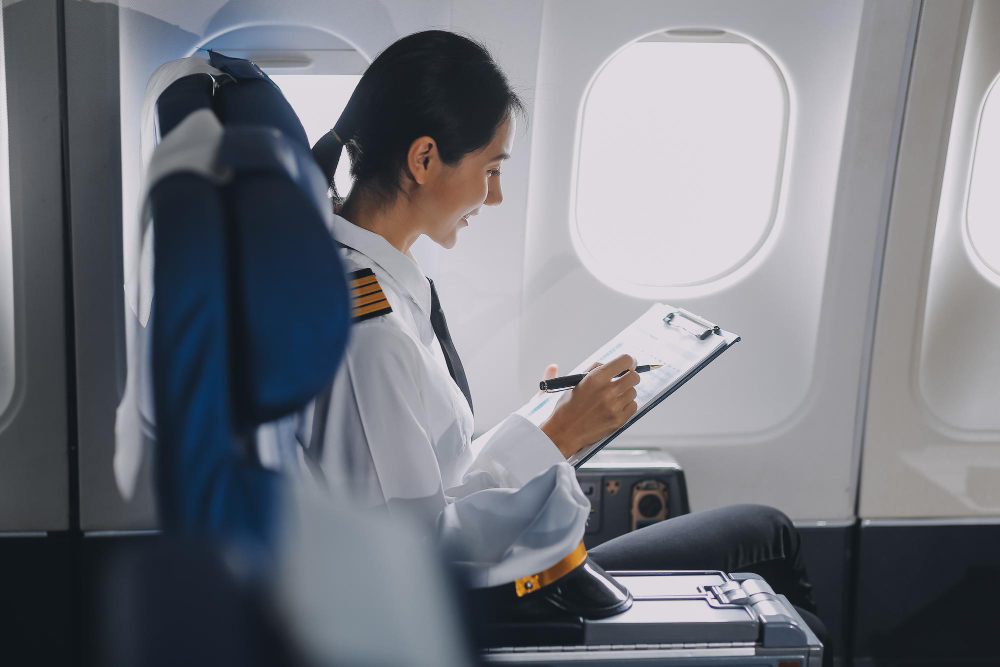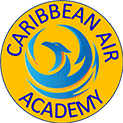Your Complete Guide to Pilot Licenses and Flight Training

Have you ever watched planes soar overhead and wondered what it takes to become a pilot? The path to earning your wings involves understanding the different types of pilot licenses available and choosing the right training program for your aviation goals. Whether you dream of flying recreationally on weekends or pursuing a career with a major airline, there's a specific license and training pathway designed for your aspirations.
This comprehensive guide will walk you through the various pilot certifications, from basic recreational licenses to advanced commercial ratings. You'll discover the requirements, privileges, and limitations of each license type, helping you make an informed decision about your aviation training journey. We'll also explore why location matters when choosing a flight school and how tropical destinations like the Bahamas offer unique advantages for aspiring pilots.
Private Pilot License (PPL): Your Gateway to Aviation
The Private Pilot License serves as the foundation for most aviation careers and recreational flying adventures. This entry-level certification allows you to fly aircraft for personal use, carry passengers (though not for compensation), and build the experience needed for advanced ratings.
To earn your PPL, you'll need a minimum of 40 flight hours, including at least 20 hours of flight training with a certified instructor and 10 hours of solo flight time. The training covers essential skills like takeoffs, landings, navigation, emergency procedures, and cross-country flights. You'll also need to pass both written and practical examinations administered by aviation authorities.
With a PPL, you can fly single-engine aircraft during daylight hours in good weather conditions. While you cannot receive payment for flying, this license opens doors to recreational flying, personal transportation, and serves as the stepping stone to commercial aviation careers.
Sport Pilot License: Simplified Flying for Recreation
The Sport Pilot License offers a more streamlined path to aviation for those interested in recreational flying with fewer requirements than a traditional PPL. This license requires only 20 hours of flight time and allows you to fly Light Sport Aircraft (LSA) during daylight hours in uncrowded airspace.
Sport pilot training focuses on basic flying skills and safety procedures while requiring fewer medical certifications than other licenses. You can carry one passenger and fly aircraft weighing up to 1,320 pounds with a maximum speed of 120 knots.
This option appeals to recreational pilots who want to experience the joy of flight without the extensive training requirements of higher-level certifications. However, the restrictions on aircraft type and flying conditions make it less suitable for those with broader aviation goals.
Commercial Pilot License (CPL): Flying for Profit
The Commercial Pilot License represents a significant step toward professional aviation careers. This certification allows you to receive compensation for flying services, opening opportunities in charter flights, aerial photography, flight instruction, and cargo operations.
CPL candidates must accumulate at least 250 flight hours and demonstrate advanced flying skills through rigorous training and testing. The curriculum includes complex aircraft operations, advanced navigation techniques, and commercial flight procedures. You'll also need to master instrument flying and demonstrate proficiency in various weather conditions.
Commercial pilots can work in diverse aviation sectors, from scenic tours and cargo delivery to corporate flights and emergency services. This license provides the foundation for airline transport pilot certification and represents a crucial milestone in professional aviation careers.
Airline Transport Pilot License (ATPL): The Pinnacle of Aviation Certification
The Airline Transport Pilot License represents the highest level of pilot certification, required for captains of commercial airlines and large aircraft operations. ATPL holders must demonstrate exceptional flying skills, extensive knowledge, and the ability to make critical decisions under pressure.
To qualify for an ATPL, pilots need a minimum of 1,500 flight hours, including specific experience in cross-country flying, night operations, and instrument conditions. The training is intensive and comprehensive, covering advanced aircraft systems, crew resource management, and airline operations procedures.
ATPL certification opens doors to careers with major airlines, cargo companies, and corporate flight departments. These pilots command the highest salaries in aviation and enjoy opportunities for international travel and career advancement within the airline industry.
Instrument Rating: Mastering All-Weather Flying
An Instrument Rating (IR) is an additional qualification that can be added to any pilot license, allowing flight in clouds and poor visibility conditions using only aircraft instruments for navigation. This rating dramatically expands flying opportunities and safety margins.
Instrument training teaches pilots to interpret flight instruments, navigate using radio signals, and execute precision approaches to airports. The course typically requires 40 hours of instrument time and covers topics like weather interpretation, flight planning, and emergency procedures in instrument conditions.
Pilots with instrument ratings can fly in a wider range of weather conditions, making them more valuable to employers and enabling more reliable personal transportation. This rating is essential for most commercial aviation positions and significantly enhances safety during challenging weather conditions.
Multi-Engine Rating: Expanding Your Capabilities
A Multi-Engine Rating allows pilots to operate aircraft with more than one engine, opening opportunities to fly larger, faster, and more complex aircraft. This rating can be added to private, commercial, or airline transport pilot licenses.
Multi-engine training covers the unique characteristics of twin-engine aircraft, including asymmetric flight procedures, engine failure scenarios, and advanced systems management. Pilots learn to handle emergencies specific to multi-engine aircraft and master the increased complexity of these sophisticated machines.
This rating is valuable for pilots pursuing airline careers, corporate flying positions, or those who want to operate high-performance aircraft for personal use. Many aviation employers prefer or require multi-engine experience for advanced positions.
Choosing the Right Aviation Training Location
The location of your flight training can significantly impact your learning experience, costs, and career opportunities. Factors to consider include weather conditions, airspace complexity, cost of living, and the quality of training facilities.
Training in locations with favorable weather conditions allows for more consistent flying schedules and faster completion of certifications. Areas with diverse topography and varying weather patterns provide excellent learning opportunities for developing pilot skills.
The Bahamas has emerged as an attractive destination for aviation training, offering year-round flying weather, modern facilities, and a supportive regulatory environment. Students can complete training more efficiently while experiencing diverse flying conditions over water and islands.
The Benefits of International Aviation Training
International aviation training programs offer unique advantages including exposure to different regulatory systems, diverse flying environments, and often more favorable weather conditions. Students gain valuable experience that enhances their qualifications and global perspective on aviation.
Training abroad can also provide cost advantages, depending on the location and currency exchange rates. Many international programs offer intensive courses that allow faster completion of certifications compared to traditional part-time training schedules.
The experience of training in different countries broadens pilots' understanding of international aviation procedures and can be valuable for careers in global airlines or international charter operations.
Planning Your Aviation Training Journey
Successful pilot training requires careful planning, realistic goal-setting, and consistent commitment to learning. Start by defining your aviation objectives, whether recreational flying, commercial career, or airline aspirations.
Research different training programs, compare costs, and consider factors like location, aircraft fleet, instructor quality, and completion rates. Many schools offer discovery flights or introductory programs that help you experience flying before committing to full training programs.
Budget considerations should include not only tuition costs but also living expenses, equipment, testing fees, and potential additional training hours beyond minimum requirements. Most students require more than the minimum flight hours to achieve proficiency standards.
Taking Flight: Your Next Steps in Aviation
Understanding the different pilot licenses and training options available is the first step toward achieving your aviation dreams. Each certification level offers unique privileges and opportunities, from recreational weekend flying to commanding commercial airliners around the world.
The key to successful pilot training lies in choosing the right program for your goals, budget, and timeline. Consider factors like weather, cost, aircraft availability, and instructor quality when selecting a training location.
If you're interested in aviation training in the Bahamas, contact Caribbean Air Academy today for more information about their comprehensive pilot training programs and discover how their unique location and modern facilities can accelerate your journey to becoming a certified pilot.
